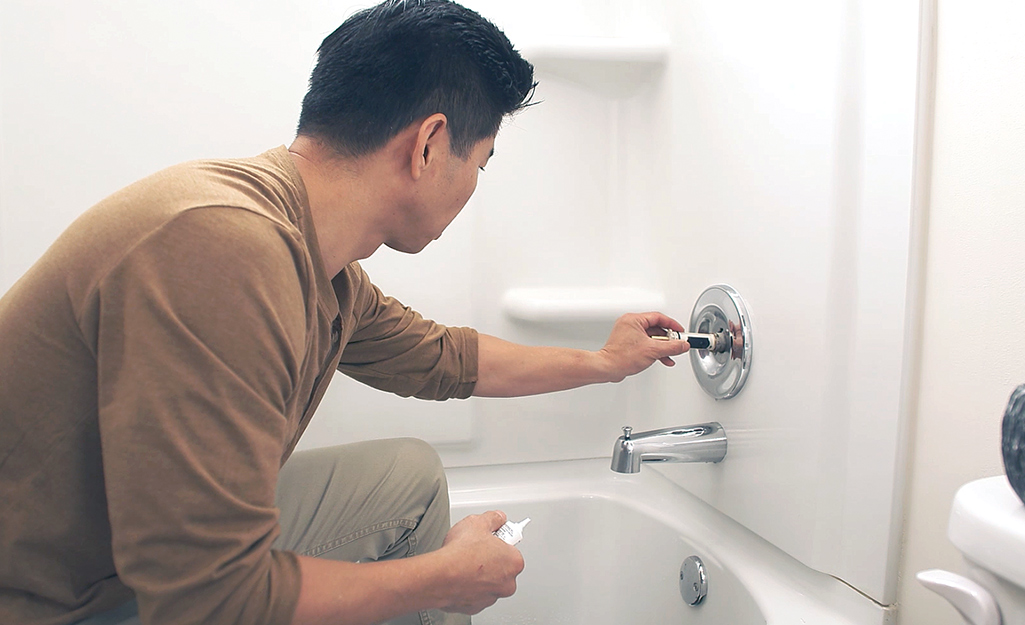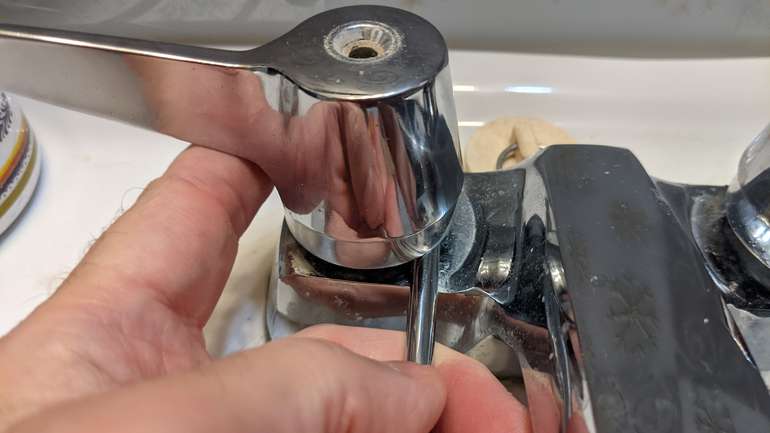What're your thoughts and feelings about Leaky Faucets: Why They Happen & What to Do About Them?

Trickling faucets might look like a minor inconvenience, yet their impact surpasses simply the annoyance of the noise. From drainage to sustaining unneeded monetary prices and health and wellness risks, disregarding a leaking faucet can bring about various effects. In this write-up, we'll explore why it's critical to address this usual family problem promptly and properly.
Waste of Water
Environmental Effect
Leaking faucets contribute considerably to water wastage. According to the Environmental Protection Agency (EPA), a single tap trickling at one drip per secondly can squander more than 3,000 gallons of water each year. This not just strains water sources however also influences environments and wildlife based on them.
Financial Expenses
Increased Water Bills
Past the environmental effect, trickling taps can inflate water expenses considerably. The accumulated wastage gradually converts right into greater utility expenditures, which can have been stayed clear of with timely fixings.
Prospective Property Damages
Moreover, extended leaking can bring about harm to fixtures and surfaces surrounding the tap. Water accumulation can trigger staining, corrosion, and even architectural concerns if left ignored, causing added repair service prices.
Health and wellness Worries
Mold And Mildew and Mold Development
The consistent visibility of moisture from a trickling tap develops an excellent environment for mold and mold development. These fungi not only jeopardize interior air top quality yet also position health and wellness dangers, specifically for people with respiratory system problems or allergic reactions.
Waterborne Conditions
Stationary water in trickling faucets can become a breeding place for germs and other microorganisms, boosting the danger of waterborne diseases. Impurities such as Legionella germs thrive in stationary water, potentially causing major diseases when ingested or breathed in.
DIY vs. Expert Repair work
Advantages and disadvantages of DIY Fixing
While some may attempt to take care of a leaking faucet themselves, do it yourself fixings include their own collection of obstacles. Without appropriate knowledge and tools, DIY efforts can intensify the issue or lead to incomplete repairs, prolonging the issue.
Advantages of Hiring a Specialist Plumber
Hiring a specialist plumber guarantees that the underlying root cause of the dripping tap is addressed properly. Plumbings possess the expertise and equipment to diagnose and fix faucet issues effectively, saving time and decreasing the danger of more damage.
Step-by-Step Overview to Repairing a Dripping Tap
Devices Required
Before trying to fix a leaking tap, collect the necessary tools, including an adjustable wrench, screwdrivers, substitute components (such as washing machines or cartridges), and plumber's tape.
Usual Tap Issues and Their Solutions
Recognize the type of tap and the specific issue causing the drip. Usual troubles consist of damaged washing machines, rusty shutoff seats, or faulty O-rings. Refer to maker directions or online tutorials for detailed support on repair work.
Safety nets
Routine Maintenance Tips
To stop leaking taps, execute regular upkeep such as cleaning up aerators, checking for leakages, and changing damaged parts immediately. Furthermore, take into consideration installing water-saving gadgets or upgrading to more efficient components.
Significance of Prompt Fixes
Attending to leaking faucets as quickly as they're seen protects against more water wastefulness and prospective damages, ultimately saving both water and money in the long run.
Impact on Building Worth
Assumption of Well-Maintained Building
Keeping a property in good condition, consisting of resolving maintenance issues like trickling faucets, boosts its viewed value and worth among possible purchasers or tenants.
Impact on Resale Worth
Features with well-kept plumbing components, including faucets, command greater resale worths in the realty market. Resolving dripping faucets can add to a favorable impact during residential property examinations and negotiations.
Ecological Responsibility
Specific Contribution to Conservation
Taking duty for fixing leaking taps lines up with broader efforts towards water preservation and environmental sustainability. Every person's activities jointly make a considerable impact on protecting priceless resources.
Sustainable Living Practices
By focusing on timely fixings and adopting water-saving behaviors, individuals add to sustainable living methods that profit both existing and future generations.
Final thought
Resolving a dripping faucet surpasses mere ease; it's an essential step towards conserving water, minimizing economic costs, and securing wellness and residential property. Whether via do it yourself repair work or expert help, doing something about it to fix dripping taps is a tiny yet impactful means to advertise liable stewardship of sources and contribute to a healthier, more lasting future.
How to Fix a Leaky Faucet: Step-by-Step Repair Guide
A leaky faucet may seem like a simple annoyance, but if it's not fixed promptly, that leak could cost hundreds to potentially thousands. From water damage to mold, mildew, and high water bills, even a tiny leak can be catastrophic if left unattended. Damage like this can even affect the overall value of your home, so it's important to take the right approach for leaky faucet repair. You may need the help of a plumber in some cases, but we've got a few tips you can try on how to fix a leaky faucet before calling the pros.
Four Faucet Types
When you're learning how to fix a leaky faucet, the first step is knowing what kind of faucet you're working with! There are four common types.
Cartridge Faucets
Cartridge faucets come in one- or two-handled varieties. In one-handled cartridge faucets, hot and cold water combines in a single cartridge. In the two-handled versions, hot and cold water are controlled separately and mixed in the faucet.
Ball Faucets
Ball faucets have a single lever you push up and down to adjust the pressure and rotate to change the temperature. A slotted metal ball controls the amount of water allowed into the spout.
Compression Washer Faucets
They're the oldest type of faucet, but they're still used in many homes — especially older ones. Compression faucets have two separate handles that, when turned, raise or lower the washer that seals a water valve. This valve stops water from flowing through the faucet when it is turned off.
Disc Faucets
Disc faucets rarely need to be repaired due to their maintenance-free design. The water flow is controlled by two discs — the upper one raises and lowers against a fixed lower disc, creating a watertight seal. If your disc faucet starts leaking, you may need to replace the seals or clean residue buildup from the inlets.
Fixing a Leaky Faucet
Step 1: Turn Off the Water
Whether you're learning how to fix a leaky bathtub faucet or how to fix a leaky kitchen faucet, always turn off the water supply to your working area when you're fixing a leak. The last thing you want is a flood added to your list of things to fix.
Look for the shutoff valves below your sink or around the tub and turn them clockwise to stop the water flow. If your faucet doesn't have shutoff valves, you may need to turn off the water for the whole house. Check to make sure it's off by turning the faucet on. If nothing comes out, you're ready to start the repair.
Step 2: Take Apart the Faucet
How you disassemble your faucet depends on the type of fixture you have. You can use a flathead screwdriver to remove the caps on top of the handle or handles for cartridge and compression faucets. Inside, you should see handle screws. Unscrew these with a screwdriver to remove the handle.
Disc- and ball-style faucets will typically have an inlet screw near the handle, and removing that will reveal the interior of the faucet.
Detach the Valve Stem
For cartridge- and compression-style faucets, you'll see the inner valve stem or cartridge once you remove the faucet handles. If you have a compression faucet, unscrew the brass valve stem. If you have a cartridge faucet, pull out the cartridge. If your cartridge has been in place for a while, it may require some tools or extra force to remove it due to mineral deposits.
Examine and Replace Parts
Once you've removed the parts, check them out to confirm what needs to be replaced. You may see corroded rubber washers, O-rings, stems, or cartridges. On a ball-style faucet, check the seats and springs for damage.
If you need to repair a leaky disc faucet, check the inlet and seals on the lower disc.
Once you determine what parts must be replaced, visit your local hardware store. Bring the damaged parts with you to ensure you can purchase the correct components to replace them.
Clean Valves and Faucet Cavity
If you've removed a stem or cartridge, you may notice mineral buildup in the faucet's threads. Use white vinegar to clean the valve seat by soaking it for a few minutes, then scrub it away with a soft toothbrush and rinse with warm water. You can also clean the interior of the faucet in the same way.
Reassemble the Faucet
Once your faucet is cleaned and the required parts have been replaced, it's time to reassemble it. Put the pieces back together and slowly turn the water supply back on. Doing this slowly is crucial because too much initial water pressure can damage the new hardware you've just installed.
https://homewarranty.firstam.com/blog/how-to-fix-leaky-faucet

We were introduced to that article about Why It's Important to Fix Leaky Faucets through a buddy on a different domain. So long as you appreciated our blog posting kindly do not forget to share it. We recognize the value of your readership.